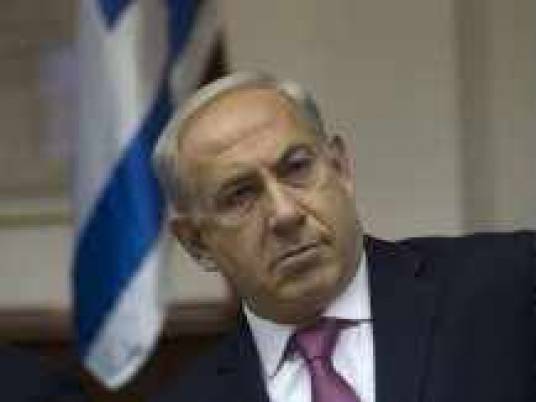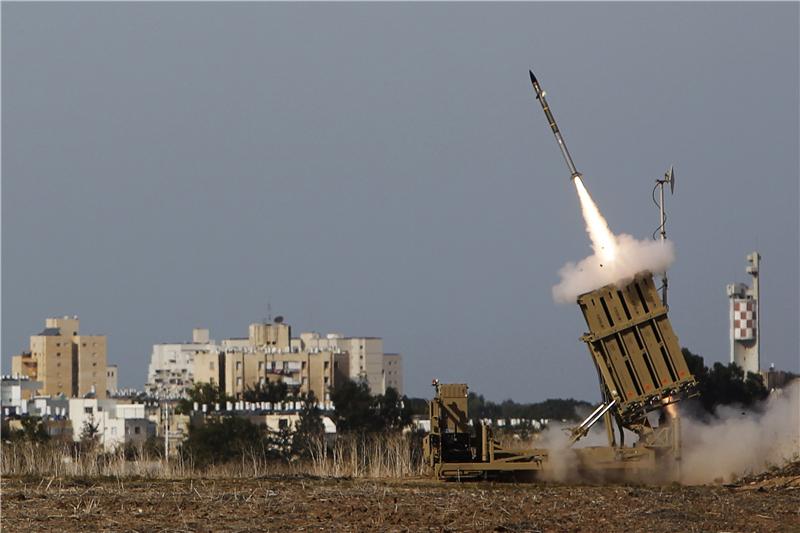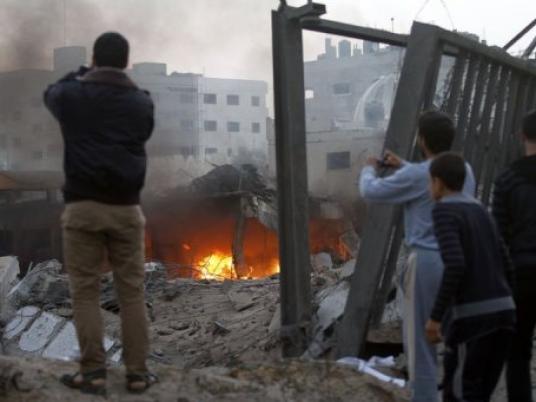Now that it has ended with a truce, maybe it’s time to understand the logic behind Israel’s Operation Pillar of Defense.
In fact, the operation elicits more questions than answers. The besieged Gaza Strip is too weak to pose a threat to Israel. Reports produced by Israel’s security agency, Shin Bet, point out that more than 160 missiles launched from Gaza in October barely injured two Israelis and three foreign workers. So why did Israel need this war?
In January, the Israeli foreign ministry said the political stalemate would trigger a third uprising, whether that was incited by the Palestinian Authority or not. Meanwhile, Israeli Defense Minister Ehud Barak warned of the repercussions of stalled negotiations.
Fearing an imminent uprising, the Israeli army called for increasing the number of work permits granted to Palestinians who work in Israel, but the government did not respond adequately.
Gaza has become a problem for Israel, which has to allow the entry of international assistance and perhaps make further concessions. Ehud Eilam, an expert on Israeli national security, says Israel should support Hamas even at the security level to be able to stand in the face of other factions and prevent a possible popular uprising.
Hence came the last military operation.
The goal of the operation is to impose new conditions for negotiations. Cello Rosenberg wrote in Israeli daily Ma’ariv that the battle will only come to a decisive end at the negotiating table. He argued that a logical initiative proposed by Israel would guarantee a long-term truce and would be well-received by Egypt and Arab countries.
If the negotiating table is the objective behind the military operation, then there is no partner other than Hamas, at least in Gaza, and there is no broker better than Egypt’s Muslim Brotherhood.
Shlomi Eldar, Israeli Channel 10’s Arab affairs specialist, says Hamas is satisfied to be in power and has left other factions to carry out limited and calculated operations. He thinks Prime Minister Ismail Haniyeh is pragmatic, and even his strongman, Ahmed al-Jabari — the Hamas military chief who was killed by Israel at the start of the recent campaign — opened dialogue with Israelis under Egyptian sponsorship.
Meanwhile, Egypt under Brotherhood rule has become an important player, particularly for Israel.
Yehuda Belinga, a specialist in Egyptian and Syrian affairs at Bar-Ilan University, has said, “From his position of authority, [President Mohamed] Morsy sees what he never saw from any other,” adding that “even if Morsy gave fiery statements, he would still keep contact with Israelis and pressure Hamas to push for a cease-fire.” And that was exactly what happened.
The Israeli military operation cost a lot. The direct cost of the war is estimated at 3 billion shekels. The cost of building one iron dome is US$200 billion, and there are plans to have 13 of those built. The cost of a fighter jet is $15,000 per hour. The cost of deploying 40,000 reserve soldiers is $760,000.
Furthermore, the operation’s indirect costs include the losses incurred by southern towns — which were estimated at $20 million in five days — lost tourist arrivals and compensation the Israeli government is expected to pay to Israelis.
The war has also caused the stock market to go down. Experts say uncertainty about the future is prompting investors to leave, and the value of the shekel to drop.
Despite all this, Israel launched its offensive without hesitation. This is because, from the Israeli ruling establishment’s point of view, the strategic benefits of war are much higher than the economic losses. The US also accepts the same logic.
It is no secret that assistance from the US helped launch the high-cost military operation. Israeli intelligence sources say Israeli Prime Minister Benjamin Netanyahu dispatched National Security Adviser Yaakov Amidror to Washington on 9 November, where he met Tom Donilon, the US president’s national security adviser.
Amidror was given the green light to strike Hamas, provided he coordinated with the White House at the military and political levels.
The simple reason for US encouragement to Israel is that the operation would pile indirect pressure on Iran and would be cheaper for the US than launching its own operation.
Another, less strategic factor played a role in launching Pillar of Defense. It’s that Netanyahu wished to win votes, as he thought a successful short operation would secure more votes for Likud and the nationalist right-wing party Yisrael Beiteinu.
The same scenario has been repeated several times, the last of which was peration Cast Lead. At the time, Ehud Olmert, former prime minister, miscalculated his moves, allowing others to take over.
However, Ma’ariv columnist Amon Lord thinks Netanyahu and Barak have managed the situation well, for they have given everyone the impression that they are seeking appeasement, all while not allowing Hamas to escalate. And the whole story ended within a few days with a truce.
Operation Pillar of Defense testifies to Israel’s main strategy toward Gaza: deterrence, through short, calculated, periodic wars. This is a strategy of failure. It only defers the explosion.
A third intifada is on the agenda. Nobody knows when and how. But it can safely be said that the current situation is inherently unstable and unsustainable.
This piece was translated by Dina Zafer.
Mohamed Hosny is a writer and researcherspecializing in Israeli history and politics. He is a PhD candidate at Ain Shams University.
This piece was originally published in Egypt Independent's weekly print edition.




